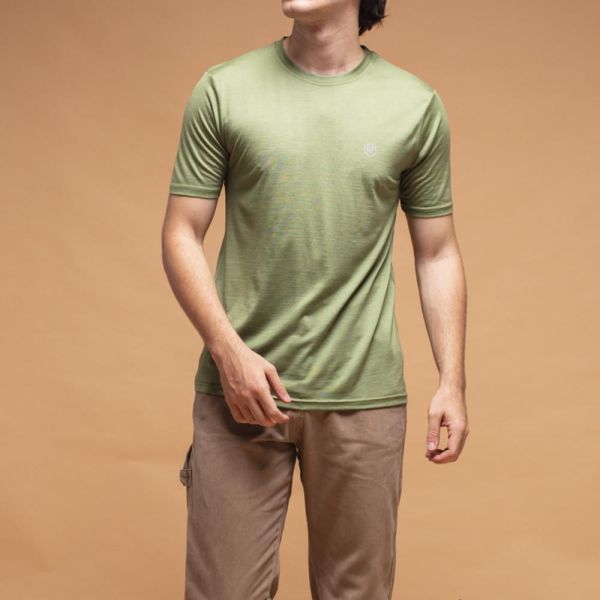New News For Picking Merino Wool Base Layers
Wiki Article
Why Are The Base Layers Made Of Yak Merino An Excellent Choice To Wear During Winter?
Due to a combination and benefits of both yak and Merino Wool, Yak base layers are effective for winter sport clothing. The hollow fibers in it are fantastic insulation since they capture air. When it is combined with merino Wool which has superior insulation properties, the fabric offers superior warmth, keeping the body comfortable in cold conditions.
Merino wool is moisture-wicking which means it can draw moisture away from your body, and then release it back to the air. It keeps you dry. Yak has the same ability to wick moisture as merino. This blend regulates body's temperature by keeping the moisture away from the skin even during vigorous physical activity in cold weather.
Merino is renowned for being extremely soft and comfortable with fine fibers, which create less irritation. Blended with silky and soft yak-wool fibers, this wool is very comfortable.
Odor Resistance - Both merino as well as the yak wool are naturally antimicrobial, which assists in reducing the growth bacteria that cause odors. This allows the clothing to keep its freshness even when used for long periods of time.
Durability: Yak wool has a natural durable. When combined, with merino fibers it is a great choice in outdoor sports as well as other activities.
Temperature Regulation. Yak merino wool base layer's insulating characteristics aid in regulating the body's temperature, keeping wearers warm even in cold temperatures. It's also breathable in high-activity times.
Merino Wool and Yak Wool are renewable, biodegradable and biodegradable which makes them eco-friendly choices for winter sportswear.
These qualities are what make yak merino base layer an excellent choice for winter sportswear, as they offer warmth, comfort, moisture control and long-lasting durability. View the best the advantage about merino wool base layer for site recommendations including merino wool underwear womens, merino wool leggings women's, wicked wool base layer, minus 33 base layer, first lite merino wool base layer, best ski underlayers, ski thermals, smartwool base layer, airblaster merino ninja suit, airblaster merino ninja suit and more.

What Are The Benefits Of Bamboo Clothing In Regards To Thermal Regulation, Biodegradability, Uv Protection, And Environmental Impact?
Bamboo clothing has many advantages in terms of control of heat as well as UV protection, biodegradability, and environmental impact- thermal Regulation-
Bamboo fabric for insulation is breathable, and also has thermal-regulating properties. It is warm when temperatures are cold. It helps regulate body temperature by retaining warm temperatures in cooler temperatures as well as allowing ventilation during physical activity to avoid overheating.
UV Protection
Bamboo fabric is naturally impervious to harmful UV radiations. It can block a significant portion of the sun's ultraviolet radiation, and provides an additional layer of defense against sunlight exposure when wearing it outdoors.
Biodegradability-
The bamboo clothes are biodegradable, which means it breaks down naturally at the end of its lifecycle without creating harmful residues or contributing to the pollution of the environment. This helps reduce waste and also the environmental impact of the disposal of clothes.
Environmental Impact-
Sustainability: As a primary material bamboo is incredibly sustainable. It grows rapidly and abundantly without the need for pesticides or chemical fertilizers, thus reducing the impact on the environment of cultivation. Its rapid growth makes it a long-lasting resource.
Low water usage Bamboo requires less water than other crops like cotton, making it more efficient with water. This is essential for conservation efforts, and it helps reduce the strain on the water supply.
Soil Conservation
Soil health - Bamboo cultivation doesn't reduce soil nutrients and does not require large amounts of irrigation. This helps improve soil conditions, and reduces the need for harmful practices in agriculture.
Carbon Sequestration
Carbon Absorption - Bamboo has the ability to absorb CO2 and release it more efficiently than other plants. This is a benefit in fighting climate change and carbon emissions.
Bamboo clothing offers many benefits that include thermal regulation, UV blockage and biodegradability as well as a positive impact on the planet. This makes it an ideal option for those looking to purchase functional, sustainable clothes. These attributes are in line with eco-friendly practices and offer benefits for both the wearer and the environment. Check out the top I thought about this on bamboo clothing for site examples including bamboo viscose pajamas, bamboo shirt, rayon from bamboo fabric, lisa frank bamboo pajamas, bamboo fabric clothing, ladies bamboo pants, bamboo athletic wear, cotton bamboo pajamas, bamboo yoga wear, angel dear bamboo pajamas and more.

What Makes Merino Wool And Bamboo Clothing Different From Regular Wool?
Merino bamboo, Merino, and regular wool all have unique features.
Softness Merino wool is renowned for its fine and soft fibers. This makes it soft against the skin. It's less likely to cause irritation or itchiness. causes irritation or itching when compared with other types of wool.
Merino wool is extremely effective in wicking moisture, which allows it to evaporate. It keeps wearers comfortably cool.
Merino is an organic insulation that gives extraordinary warmth even when wet. It regulates body temperature, offering insulation in cold weather and breathability to avoid overheating in the course of exercise.
Odor resistance- It stops the growth of odor-causing bacteria and ensures that clothes remain fresh, even after being worn for extended periods.
Bamboo Clothing
Softness - Bamboo clothing has a silky, soft touch that is often compared to cashmere or silk. It's silky soft on the skin giving a luxurious feel.
Bamboo fabric is moisture-wicking and has properties that pull moisture away from your body, keeping you dry while exercising.
Temperature Regulation- Bamboo clothing has natural temperature-regulating abilities, offering warmth in winter and breathability to prevent overheating.
Sustainability- Bamboo is a very renewable resource, and it grows rapidly without the need for fertilizers or pesticides. It's biodegradable and has a very low environmental impact.
Regular Wool
Texture- Traditional wool has a variety of textures, with certain types being more coarse and more prone to cause discomfort or itching.
Warmth- Regular wool offers an excellent insulation and warmth however, it can appear heavy or bulky.
Wool is a sponge for moisture and therefore less effective in absorption of moisture than merino and bamboo fabrics. But, it keeps warmth even when damp.
In summary, merino wool offers softness, excellent moisture-wicking properties, odor resistance and insulation. Bamboo clothing is a luxurious airy feel. It also regulates temperature and is eco-friendly. Wool is a different texture, and it may not possess the same properties for moisture wicking like bamboo or merino. But, it gives warmth and insulation. Each material caters to different preferences, and each has unique benefits. Have a look at the most popular merino wool base layer tips for website recommendations including smartwool base layer sale, smartwool men's classic thermal merino base layer crew, cheap merino wool base layer, smartwool base layer sale, womens icebreaker base layer, merino wool mid layer, merino wool undershirt, smartwool classic thermal, smartwool classic thermal merino quarter zip base layer top women's, ski thermals and more.
